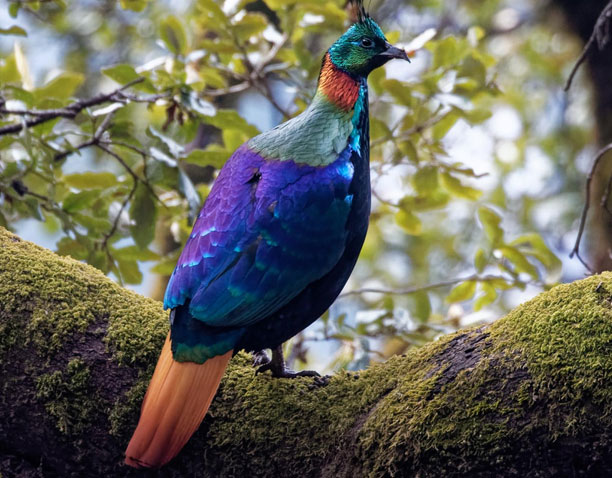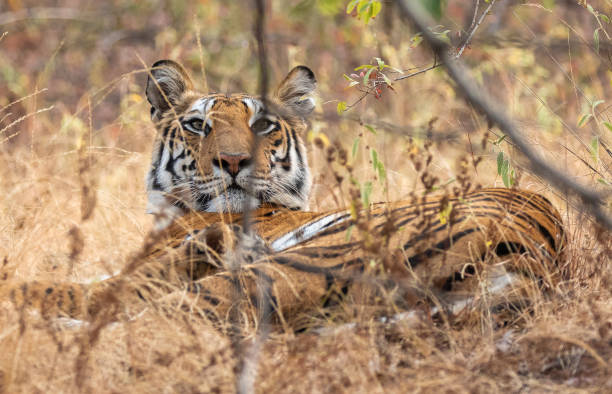Indian Hornbills, with their distinct long beaks and striking colors, are one of the most fascinating bird species found in the Indian subcontinent. These enigmatic birds of India are symbolic of the rich biodiversity of the region, showcasing the beauty of nature. This article dives into the captivating world of Indian Hornbills, providing a closer look at their types, habitats, and behaviors.
Hornbills: An Introduction
Belonging to the family Bucerotidae, Hornbills are characterized by their disproportionately large beaks often adorned with a casque – a hollow structure atop the beak. These bird species are found throughout Africa and Asia, but a significant number of species reside in the Indian forests. They play a vital role in maintaining the health of forests by dispersing seeds and controlling pests.
The Different Types of Indian Hornbills
Altogether, India is home to nine species of hornbill, four of which are specific to the Western Ghats – the Indian Grey Hornbill, the Malabar Grey Hornbill, the Malabar Pied Hornbill and the Great Hornbill, which is widely distributed but has an endangered status.
Great Indian Hornbill
The Great Indian Hornbill, also known as the Great Pied Hornbill, is one of the largest members of the Hornbill family. This Indian bird species is renowned for its massive bill and striking casque. This species inhabits the forests of Northeast India, Western Ghats, and the foothills of the Himalayas.

Malabar Grey Hornbill
The Malabar Grey Hornbill, a smaller Indian bird species compared to the Great Indian Hornbill, is endemic to the Western Ghats. This species lacks the casque, a feature commonly found in other hornbills.

Indian Grey Hornbill
The Indian Grey Hornbill is a bird species commonly found across the Indian Subcontinent. This bird has a unique, loud laughing call and is known for nesting in cavities of old trees.

These are just a few examples of the diversity of Hornbill bird species found in India. Other notable species include the Oriental Pied Hornbill, Narcondam Hornbill, and the Rufous-necked Hornbill.
Hornbills and Their Habitats
Hornbills predominantly inhabit forested habitats. Their presence is an indicator of a healthy forest ecosystem because of their role in seed dispersal. However, their habitats are shrinking due to deforestation and other human activities, posing a significant threat to these Indian birds.
The Intriguing Behaviour of Hornbills
Hornbills, as a bird species, display fascinating behaviours, especially during the breeding season. The female hornbill seals herself inside a tree cavity, leaving a narrow slit through which the male feeds her. This behaviour is a unique adaptation for protecting their eggs and chicks from predators.
Conservation of Hornbills
Despite their ecological importance, Hornbills face threats from habitat loss and hunting. It’s crucial to raise awareness about the plight of these Indian birds and take action to conserve these magnificent creatures of nature. Various organizations in India, like the Nature Conservation Foundation and the Bombay Natural History Society, are working towards Hornbill conservation.
Conclusion
Hornbills, a crucial part of India’s rich bird biodiversity, add to the beauty of the Indian forests they inhabit with their fascinating characteristics and behaviours. Understanding more about these Indian birds and their natural habitats is not just interesting but also essential for their conservation. Let’s work together to ensure these magnificent creatures continue to thrive in the wild, contributing to the balance of our ecosystems and the richness of nature. These bird species are a testament to the diverse and vibrant nature of Indian wildlife. If you wish to spot the Birds and keep your birds book updated, you can come and explore this Tour in that you can explore the birds, tiger and Cultural.
You can write us at info@castleandking.com or do call us +00919818885102














